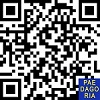DIFFERENT INTERPRETATION OF AMBIGUITIES SENTENCES (A Study of Class C the Second Semester Postgraduate Students Majoring English of State University of Semarang)
Abstract
Ambiguityis strictly speaking, used to describe aword, phrase, or sentence when it has more thanone interpretation.
Sometimes we found many ambiguities sentences when we are reading or listen to the English sentences. Multi
interpretations not only happen from the English language learners, but also in native speakers themselves. This
study investigated about is there any different interpretation of ambiguities sentences made by students of class c,
second semester students of PPs Unnes?, and what types of ambiguous sentence majority missing in their
translating. The objectives of study were to know that the students of PPs Unnes have different interpretations when
they are translating the ambiguities sentences and to identifying the types of ambiguities. This study used descriptive
qualitative approach; ten postgraduate students from Class C PPs Unnes participated in this study as respondents.
All were university students majoring in English. They were given 5 ambiguous sentences. Sentences include
different sources of ambiguity such as, structural ambiguity, and lexical ambiguity. The subjects were asked to
translate the sentences into Indonesian language. The result of study presented that participants who are not native
speakers of English exhibited the different interpretations in translate both the given types of ambiguous sentences.
Almost all of ten respondents have different interpretations in each ambiguous sentence. Most respondents show
different translating majority in lexical ambiguous sentences.
Sometimes we found many ambiguities sentences when we are reading or listen to the English sentences. Multi
interpretations not only happen from the English language learners, but also in native speakers themselves. This
study investigated about is there any different interpretation of ambiguities sentences made by students of class c,
second semester students of PPs Unnes?, and what types of ambiguous sentence majority missing in their
translating. The objectives of study were to know that the students of PPs Unnes have different interpretations when
they are translating the ambiguities sentences and to identifying the types of ambiguities. This study used descriptive
qualitative approach; ten postgraduate students from Class C PPs Unnes participated in this study as respondents.
All were university students majoring in English. They were given 5 ambiguous sentences. Sentences include
different sources of ambiguity such as, structural ambiguity, and lexical ambiguity. The subjects were asked to
translate the sentences into Indonesian language. The result of study presented that participants who are not native
speakers of English exhibited the different interpretations in translate both the given types of ambiguous sentences.
Almost all of ten respondents have different interpretations in each ambiguous sentence. Most respondents show
different translating majority in lexical ambiguous sentences.
Keywords
ambiguity sentence, multi interpretation, non native speaker
Full Text:
PDFDOI: https://doi.org/10.31764/paedagoria.v6i2.169
Refbacks
- There are currently no refbacks.
Copyright (c) 2018 Universitas Muhammadiyah Mataram

This work is licensed under a Creative Commons Attribution-ShareAlike 4.0 International License.
Paedagoria : Jurnal Kajian, Penelitian dan Pengembangan Kependidikan
Fakultas Keguruan & Ilmu Pendidikan | Universitas Muhammadiyah Mataram.
_______________________________________________
 | Paedagoria : Jurnal Kajian, Penelitian dan Pengembangan Kependidikan |
______________________________________________
CURRENT INDEXING:
EDITORIAL OFFICE:

















